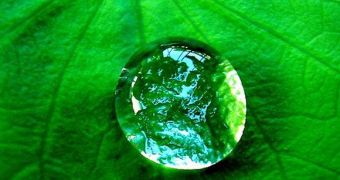The factors underlining droplet dynamics have been an object of intense scrutiny for physicists. One of the most important goals in this research was figuring out how ultrasound waves traveling over a surface can influence liquid droplets, eventually forcing them to move. Experts hypothesized that a wide array of physical mechanisms might be at work in this, but now French investigators managed to throw more light on the events taking place when this happens, AlphaGalileo reports.
The new work was led by a team of scientists from the Institut d'Electronique de Microelectronique et Nanotechnologies (CNRS / Universite Lille 1 / Ecole Centrale de Lille). The expert says that they managed to get a better picture of how the acoustical waves penetrate droplets, first causing them to oscillate and eventually displacing them from their initial position. Details of their work were published in the latest issue of the respected scientific journal Physical Review E. The datasets could be used to promote innovations in a wide array of fields of research, the French scientists say.
One of the most important applications for the new information could be the optimization of biochemical analysis, which are now being conducted using DNA chips. These instruments contain droplets of biological liquids that need to be circulated in various patterns across its surface. By learning how to control them using acoustical waves, researchers could increase the efficiency of the analysis process and also reduce the time it takes for samples to be scrutinized. In their experiments, the scientists looked at how acoustical waves affect droplets using a high-speed video camera, capable of capturing no less than 5,000 frames per second.
Analysis of the shots revealed that the droplet was being pushed in the direction the wave was traveling, at a speed of about a few centimeters per second. But, when the wave first hits it, it begins to oscillate and change shape. Periodically, the droplet stretches upwards and then flattens altogether, right before beginning to actually move from its original position. In the journal entry, the team also details a host of other physical phenomena that appear when waves and droplets interact. They say that a wide variety of applications could be found for some of these auxiliary processes as well.

 14 DAY TRIAL //
14 DAY TRIAL //